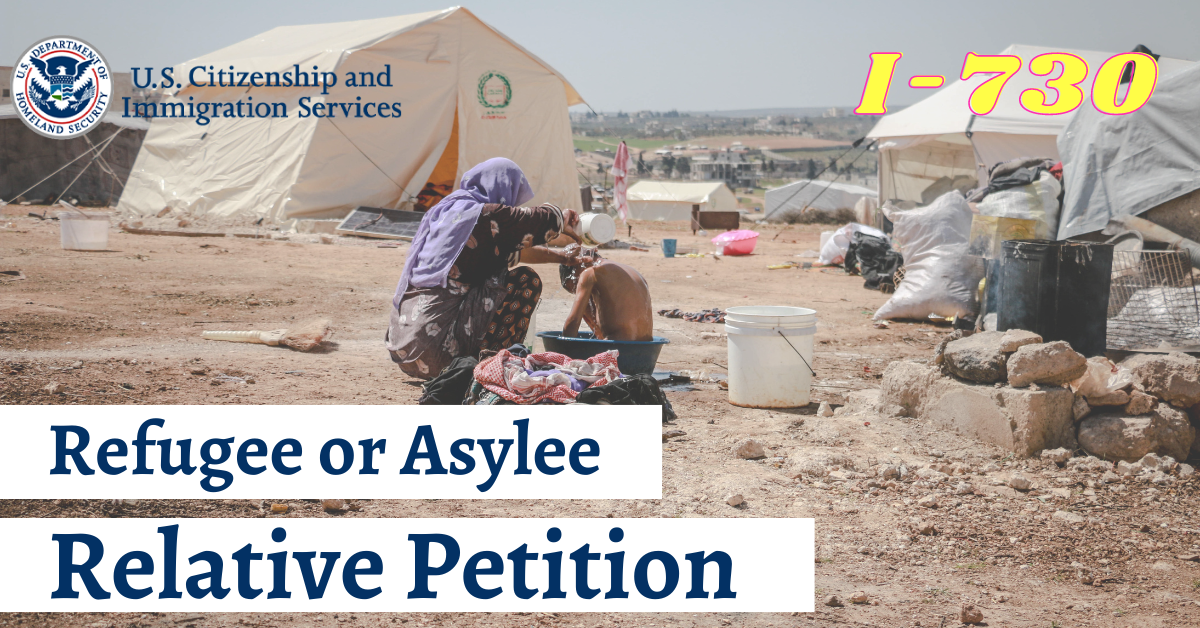Filling Out Form I-730, Refugee or Asylee Relative (Part: 1)
If you have been granted refugee or asylum status in the United States, you have the option to file Form I-730, which is the Refugee/Asylee Relative Petition, with the U.S. Citizenship and Immigration Services (USCIS). By submitting this form along with the necessary supporting documents, you can enable your spouse and unmarried children under the age of 21 to join you in the United States in derivative asylee/refugee status. (See I.N.A. § 207(c)(2) and I.N.A. § 208(b)(3).)
It is important to note that you have a two-year window from the date of your grant of asylum or refugee status to apply for derivative status for your eligible family members. However, in certain cases where there is good cause, the requirement to file within two years may be waived by the U.S.
Keep in mind that as the principal asylee or refugee, you are the only one eligible to file Form I-730 for your family member. If you were granted derivative asylee or refugee status, you are not eligible to file this form.
Who Will Qualify as a Refugee/Asylee Relative
The principal refugee or asylee must be the person who fills out and files the form for family members. The family members themselves cannot petition for derivative status on their own.

To become a derivative refugee or derivative asylee, the family member must:
- Have an existing relationship with the principal refugee or asylee
- Be an unmarried child
- Be under the age of 21
- Have no record of persecution
Having an Already Existing Relationship on Your Asylum/Refugee Grant Date
- When you file Form I-730 for a spousal family member, you must have an already established relationship with the person when you received your refugee or asylum status.
- Additionally, you and the partner you are petitioning for must still be in relationship when you file Form I-730 with USCIS. For your spouse, you must have been married by the time you were granted refugee status/asylum.
- If you are filing for your child, they need to have been either conceived or born by the date you were granted refugee status or asylum.
I-730 Petition for Your Unmarried Child
If you are filing USCIS Form I-730 for your child, they must be unmarried. If your child gets married even after you file, they will be ineligible to join you in the United States.
Child Under 21 Years Old
The child you are filing the I-730 petition for needs to be under the age of 21:
- When you first applied for asylum or
- When you had your refugee status interview
Another qualification is for your child to be listed on your initial forms (Form I-589 or Form I-590) when you petitioned for your current status. If your child is currently 21 and you have already petitioned for them using Form I-730, then they may be protected under the Child Status Protection Act (CSPA). According to the Immigration and Nationality Act (INA), a child is defined as someone under age of 21 years and unmarried. However, as backlogs continued to build up, some children were aging out of the “child” definition. CSPA went into effect in August 2002 to protect certain children from aging out while they were still waiting on their petition to be reviewed. The child’s new calculated age is their “CSPA age.” CSPA may protect your child, but you should still check with your immigration attorney to ensure that all information on your form is correct and your child is eligible.
Other Form I-730 Child Eligibility Information and Age Limits
If you are petitioning for an adopted child or children, your adopted children need to have been adopted before they were 16 years old to be eligible for the USCIS relative petition. If you are petitioning for your stepchild, they need to have been younger than 18 years old on the date you were married to their parent.
No Persecution Record
Your spouse or child needs to have not persecuted another person. If they did persecute another, they are automatically ineligible to receive derivative asylum or refugee status.
Form I-730 Process: Required Documents
When you submit your I-730 petition, you also need to include documents that act as evidence of eligibility. Be sure to send copies of the required documents to USCIS.
Send in the following evidence along with your Form I-730:
- A passport-style photo of each family member for whom you are filing a Form I-730 (The photograph should measure 2″ square (roughly 50 mm square) with the head centered in the frame. The head (measured from the top of the hair to the bottom of the chin) should measure between 1 to 1 3/8″ (25 to 35 mm) with the eye level between 1 1/8 to 1 3/8″ (28 and 35 mm) from the bottom of the photo.)
- Your proof of asylum/refugee status in the U.S.
- If your qualifying family member is in the United States, you will need to submit a copy of their Form I-94, Arrival-Departure Record
You also need evidence of a qualifying relationship with the person you are petitioning for.
This could include:
- Marriage certificate
- Birth certificates
- Copy of a marriage certificate to your stepchild’s parent
- Adoption decrees with evidence of legal name changes (if applicable)
- If adopted, evidence the child lived with you for at least two years
- Evidence of a bona fide marriage or parent-child relationship
- Affidavits or secondary evidence from religious or academic institutions if certain evidence is unavailable
If a document is not written in English, it must be translated from the original language to English. The translation needs to be verified as complete and accurate by a translator.
Read part 2 here




